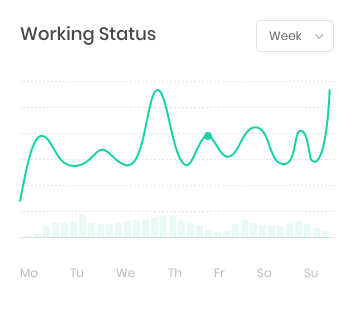+968 9596 3381
Phone Number
[email protected]
Email Address
Mon - Thu: 8:00 - 5:00
Online store always open
Phone Number
Email Address
Online store always open
WhatsApp Us Today
Drop Us an Email Today
Google Map Location
Saturday to Thursday

Oman and Saudi Arabia—two of the Gulf’s most influential economies—are redefining regional cooperation through enhanced trade, investment, and strategic partnerships. Recent years have witnessed a significant uptick in Oman–Saudi trade ties, driven by shared visions like Oman Vision 2040 and Saudi Vision 2030.
For Omani businesses, this growing bilateral relationship opens doors to expansive market opportunities, joint ventures, and economic diversification prospects. But to fully capitalize, local companies must understand how these evolving trade dynamics translate into tangible business opportunities.
Oman and Saudi Arabia are focusing on strengthening their economic collaboration through:
Elimination of trade barriers and customs facilitation.
Major investments in cross-border infrastructure projects, including roads and logistics corridors.
Joint ventures in sectors like energy, mining, logistics, manufacturing, and tourism.
Increased Saudi investments in Oman’s free zones and industrial estates.
Bilateral business councils fostering private sector partnerships.
In 2023, bilateral trade surged with key exports like chemicals, plastics, minerals, and food products leading the exchange. Both governments are actively pushing for private sector collaboration to boost non-oil trade volumes.
The new Oman–Saudi road link via Rub’ al Khali (Empty Quarter) significantly reduces cargo transit time between the two nations, positioning Oman as a strategic logistics hub for Saudi-bound goods and vice versa.
Saudi interest in Oman’s free zones and industrial estates is bringing in joint manufacturing initiatives, particularly in petrochemicals, metal products, and building materials.
Omani energy companies have opportunities to collaborate with Saudi counterparts in renewable energy projects, hydrogen initiatives, and oilfield services, leveraging mutual expertise.
With both countries focusing on tourism diversification, businesses in hospitality, travel services, and cultural exchange programs can tap into rising cross-border tourist flows.
Joint ventures in agriculture, aquaculture, and food processing are on the rise, enhancing food security strategies and creating new supply chain linkages.
Export Growth: Omani manufacturers and traders gain easier access to Saudi Arabia’s vast consumer base.
Joint Ventures & Partnerships: Opportunities to collaborate with Saudi firms on infrastructure, technology, and industrial projects.
Investment & Funding Access: Omani startups and SMEs can attract Saudi investors interested in Oman’s growing sectors.
Knowledge & Technology Transfer: Saudi collaboration paves the way for innovation in logistics, manufacturing, and fintech sectors.
Market Expansion: Easier access to Saudi markets helps Omani businesses scale operations and diversify revenue streams.
Enhanced Supply Chain Efficiency: The new overland trade routes cut down logistics costs, reducing time-to-market.
Competitive Advantage in GCC: Omani businesses can leverage their strategic position as a trade gateway for Saudi imports and exports.
Stimulated SME Sector Growth: Joint programs, funding initiatives, and capacity-building partnerships bolster local entrepreneurship.
Boost in Foreign Direct Investment (FDI): Saudi investments in Oman’s industrial estates and free zones create growth avenues for local service providers and suppliers.
Establishment of Oman–Saudi Business Council to facilitate B2B partnerships.
MoUs signed in sectors like mining, energy, infrastructure, and technology.
Policy harmonization efforts to simplify trade documentation and customs procedures.
Bilateral agreements fostering joint ventures in mega infrastructure and tourism projects.
While opportunities are abundant, Omani businesses must navigate:
Regulatory differences in business licensing and certifications.
Compliance with Saudi quality and safety standards.
Cultural nuances in business negotiations and partnerships.
Competitive pricing pressures within the wider GCC market.
Understanding Saudi Arabia’s rapidly evolving regulatory frameworks under Vision 2030 reforms.
Navigating administrative procedures, documentation, and government procurement processes in Saudi Arabia.
Omani companies looking to benefit from the strengthening Oman–Saudi trade relationship should consider these strategic actions:
Identify Saudi sectors with high growth potential where Oman has a competitive edge—such as logistics, food processing, building materials, energy services, and SMEs in innovation-driven industries.
Utilize Oman’s free zones like Sohar, Duqm, and Salalah to manufacture and re-export to Saudi Arabia, taking advantage of customs exemptions, infrastructure readiness, and streamlined export processes.
Collaborate with Saudi businesses through joint ventures or partnerships to access capital, expertise, and on-ground networks essential for scaling operations in the Kingdom.
With the new road corridors and customs cooperation, Omani businesses should redesign their supply chains for faster, more cost-effective distribution to Saudi markets.
Invest in ensuring product standards, certifications, and regulatory compliance to seamlessly align with Saudi Arabian laws and consumer expectations.
Engage with Oman–Saudi business councils, trade exhibitions, and investment summits to build networks and gain market insights.
The trajectory of Oman–Saudi economic cooperation signals a golden era for businesses in both countries. Enhanced infrastructure connectivity, deepening economic ties, and a mutual focus on diversification are transforming trade dynamics.
Omani businesses that are agile, well-prepared, and aligned with sectoral growth priorities stand to benefit enormously from:
Increased trade volumes and bilateral export-import flows.
Access to Saudi’s multi-trillion dollar Vision 2030 projects.
Strengthened regional supply chains where Oman becomes a pivotal logistics hub.
Expanded opportunities in Saudi’s rapidly modernizing sectors like tech, energy, tourism, and manufacturing.
For Omani companies, the evolving trade partnership with Saudi Arabia is not just an opportunity—it’s a strategic imperative. Businesses that align with this regional growth momentum, build cross-border partnerships, and enhance operational resilience will thrive in the coming decade.
The Oman–Saudi trade axis is becoming a powerhouse of regional economic activity. Now is the time for Omani businesses to seize the initiative, invest in market preparedness, and position themselves as key players in this transformative journey.
One of the most significant game-changers in Oman–Saudi trade ties is the development of direct overland logistics corridors, notably the Empty Quarter (Rub’ al Khali) road link. This strategic infrastructure dramatically reduces transportation time between Oman’s ports and Saudi industrial hubs.
For Omani exporters, this means:
Faster access to Saudi’s interior markets.
Reduced logistics and warehousing costs.
Easier movement of goods to the UAE and wider GCC via land.
Increased attractiveness of Omani ports like Duqm and Sohar as export hubs.
Local logistics companies, freight operators, and supply chain service providers in Oman are already witnessing increased demand due to this corridor, signaling a logistics-driven export boom.
Saudi Arabia’s push to diversify its investment footprint is seeing large-scale investments into Oman’s free zones, industrial estates, and strategic projects. Saudi sovereign wealth funds and private investors are channeling capital into:
Joint manufacturing ventures.
Renewable energy projects (hydrogen and solar).
Logistics and warehousing facilities.
Tech-based SMEs and innovation hubs in Oman.
For local businesses, this influx of capital translates into:
Increased subcontracting opportunities.
Access to funding and technology partnerships.
Job creation and upskilling of the local workforce.
Elevated demand for professional services, suppliers, and infrastructure support.
As both Oman and Saudi Arabia accelerate digital transformation under their respective national visions, cross-border e-commerce is emerging as a major opportunity. Omani SMEs in retail, fashion, beauty, electronics, and artisanal products can leverage:
Simplified e-commerce customs frameworks.
Digital payment interoperability initiatives.
Fulfillment hubs in Oman servicing Saudi consumers.
Partnerships with Saudi e-commerce platforms and aggregators.
Digital readiness, logistics optimization, and compliance with e-commerce regulations in Saudi Arabia are critical success factors for Omani businesses entering this space.
Saudi Arabia’s Vision 2030 mega-projects such as NEOM, Red Sea Project, and Qiddiya require a massive ecosystem of suppliers, contractors, and service providers. Omani companies in construction, logistics, building materials, and professional services have immense opportunities to participate by:
Forming consortiums or joint ventures with Saudi firms.
Registering as approved suppliers for Vision 2030 projects.
Leveraging Oman’s manufacturing base for supplying materials and prefabricated components.
Offering niche expertise in areas like environmental consulting, sustainability, and smart infrastructure.
Aligning product offerings and services to these mega-project requirements positions Omani businesses as competitive regional players.
The evolving Oman–Saudi trade landscape is fostering joint initiatives to support SMEs and startups. Collaborative incubation programs, venture capital funds, and bilateral innovation hubs are being established to:
Provide access to cross-border markets.
Facilitate technology exchange.
Offer seed funding and scale-up capital.
Enhance mentorship and capacity building for entrepreneurs.
Omani startups in sectors like fintech, agritech, logistics-tech, and sustainable products can significantly benefit by engaging in these cross-border ecosystems.
Oman–Saudi trade ties have reached a historic high, with both nations prioritizing bilateral trade, joint investments, and infrastructure connectivity to boost economic cooperation.
Logistics, manufacturing, energy, tourism, agriculture, and technology sectors are set to benefit significantly from the strengthening Oman–Saudi trade relationship.
The new road reduces transportation time and cost, offering direct access to Saudi markets and enhancing Oman’s position as a logistics hub for GCC trade.
For many sectors, having a local Saudi partner is beneficial and often necessary for regulatory compliance, market access, and distribution networks.
Yes, Oman offers incentives like 100% foreign ownership in Free Zones, tax exemptions, and simplified registration processes for Saudi investors.
Absolutely. With simplified customs procedures and logistics corridors, SMEs can directly export goods, provided they meet Saudi regulatory and quality standards.
Standard export documentation includes a commercial invoice, packing list, certificate of origin, export declaration, and compliance with Saudi import regulations.
Omani firms can collaborate through joint ventures, register as suppliers for mega-projects, or partner with Saudi companies aligned with Vision 2030 goals.
Both countries are part of the GCC Customs Union, so intra-GCC trade benefits from customs facilitation. However, VAT compliance in both jurisdictions is mandatory.
It’s a bilateral platform aimed at fostering B2B collaboration, facilitating investment opportunities, and addressing trade barriers between the two nations.
Yes, logistics firms can establish partnerships, open branches, or collaborate with Saudi counterparts to service the growing trade corridor demands.
Free Zones offer customs exemptions, modern logistics infrastructure, and ease of re-exporting goods to Saudi Arabia without complex regulatory hurdles.
Respecting business etiquette, building trust through long-term relationships, and understanding hierarchical decision-making are important for successful collaborations.
Yes, bilateral initiatives like innovation hubs, incubation programs, and cross-border venture capital funds are being developed to support startups in both countries.
Key challenges include regulatory differences, competitive pricing, navigating procurement processes, and ensuring product certifications align with Saudi standards.
Yes, provided they meet Saudi e-commerce regulations and partner with local logistics providers for last-mile delivery.
By positioning themselves as reliable suppliers and forming strategic alliances with Saudi contractors involved in Vision 2030 projects.
Oman and Saudi Arabia are harmonizing customs processes to facilitate faster, more transparent cross-border trade, reducing paperwork and inspection delays.
Yes, through bilateral SME funds, public-private partnerships, and access to Saudi investment funds interested in Omani ventures.
Digital trade is a growing focus area with cross-border e-commerce, digital payment systems, and logistics tech integration becoming critical to bilateral trade success.




Fill out our quick and easy contact form below. Briefly tell us about your vision and goals, and we’ll be in touch shortly to discuss a personalized plan for your success.
Al-Khuwair, Muscat, Sultanate of Oman